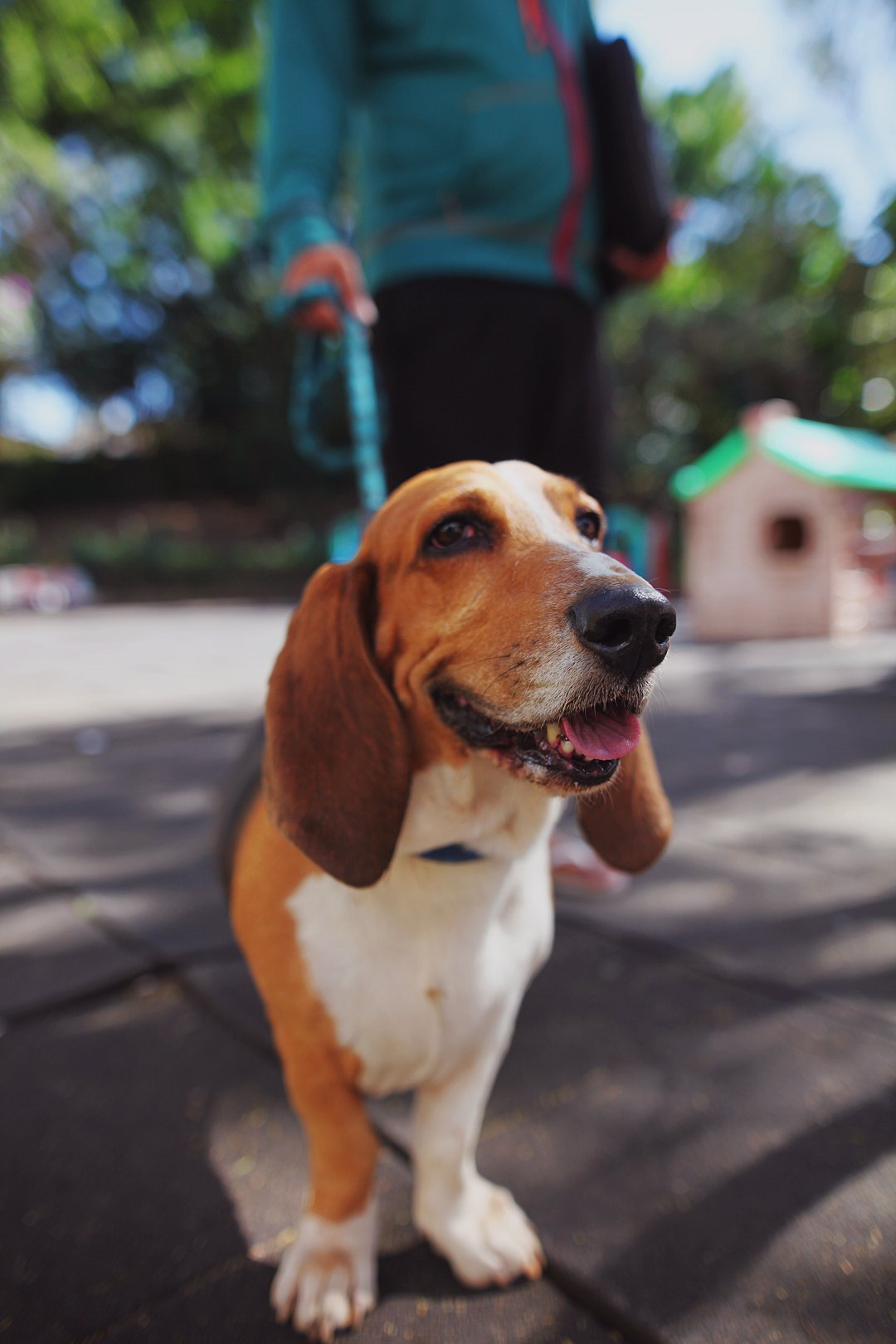Table of Contents
- 1 Introduction: A Step-by-Step Guide to Clicker Training Your Beagle
- 2 Mastering Clicker Training Techniques for Beagles
- 3 Best Practices for Clicker Training a Beagle
- 4 FAQs About: How to Do Clicker Training with a Beagle
- 4.1 Can I use clicker training for my Beagle’s obedience training?
- 4.2 How do I introduce the clicker to my Beagle?
- 4.3 Can I use clicker training to modify my Beagle’s behavior?
- 4.4 How long should each clicker training session be?
- 4.5 Can I use clicker training for other animals besides Beagles?
- 4.6 Do I always need to have treats on hand during clicker training?
Introduction: A Step-by-Step Guide to Clicker Training Your Beagle
Have you ever wondered how to do clicker training with a beagle? Look no further! In this comprehensive guide, we will walk you through the step-by-step process of clicker training your beloved beagle. Clicker training is a popular and effective method of dog training that utilizes positive reinforcement to modify behavior and promote obedience. By using a clicker as a marker and reward-based training techniques, you can teach your beagle new commands and tricks in a fun and engaging way. So, if you’re ready to embark on this exciting journey of training your beagle, let’s dive right in!
Clicker training is a form of operant conditioning, a training technique that focuses on shaping desired behaviors through rewards. The clicker serves as a distinct sound that marks the exact moment your beagle performs the desired behavior, followed by a reward. This clear communication helps your beagle understand what you expect from them and reinforces their good behavior. The key to successful clicker training lies in consistency and patience. In the upcoming sections, we will explore various clicker training techniques, best practices, and training methods specifically tailored for beagles. So, let’s get started with mastering clicker training techniques for your beagle in Heading II!
Mastering Clicker Training Techniques for Beagles
Clicker training is a popular and effective method of dog training that uses positive reinforcement to teach new behaviors and modify existing ones. This technique can be particularly useful when training Beagles, as they are intelligent and eager to please. In this section, we will explore some key techniques to help you master clicker training with your Beagle.
1. Introduce the Clicker
The first step in clicker training is to introduce your Beagle to the sound of the clicker. Start by clicking the device and immediately giving your dog a treat. Repeat this several times until your Beagle associates the click with a reward. This step is crucial as the click will serve as a marker for desired behavior during training sessions.
2. Choose the Right Rewards
Beagles are highly food-motivated, so using treats as rewards during clicker training can be highly effective. However, it’s important to choose the right rewards to keep your Beagle engaged and motivated. Experiment with different types of treats, such as small pieces of cooked chicken or freeze-dried liver, to find what your Beagle finds most enticing.
3. Break Down Behaviors into Steps
To effectively train your Beagle using the clicker, it’s important to break down desired behaviors into small, manageable steps. For example, if you want to teach your Beagle to sit, you can start by clicking and treating when they lower their hindquarters slightly. Gradually increase your criteria until your Beagle is sitting fully.
4. Use Target Training
Target training is a valuable technique that can help you teach your Beagle a wide range of behaviors. Start by presenting a target, such as a stick or your hand, and click and treat when your Beagle touches it with their nose. Gradually shape the behavior by only rewarding closer and more precise touches.
5. Be Consistent
Consistency is key when it comes to clicker training. Always use the clicker to mark desired behaviors, and always follow up with a reward. Be consistent with your timing as well, clicking at the exact moment your Beagle performs the desired behavior. This will help your Beagle understand what they are being rewarded for and accelerate the learning process.
By mastering these clicker training techniques, you can effectively teach your Beagle a wide range of behaviors and ensure a positive and rewarding training experience. In the next section, we will explore some best practices for clicker training a Beagle, including how to manage training sessions and choose appropriate training methods.
Best Practices for Clicker Training a Beagle
When it comes to clicker training your Beagle, there are several best practices to keep in mind to ensure successful and effective training sessions. These practices will help you establish a strong bond with your dog and achieve desired behaviors using positive reinforcement techniques.
1. Start with Basic Commands
Begin your clicker training journey with simple commands that your Beagle can easily understand and perform. This could include commands like “sit,” “stay,” or “come.” Starting with these basic commands will lay a solid foundation for more advanced training later on.
2. Use Short and Consistent Training Sessions
Beagles have a relatively short attention span, so it’s important to keep training sessions brief and focused. Aim for 5-10 minute sessions, multiple times a day, rather than one long session. This will help keep your Beagle engaged and prevent them from becoming bored or overwhelmed.
3. Break Down Behaviors into Small Steps
When teaching a new behavior, it can be helpful to break it down into smaller, manageable steps. This technique, known as shaping, allows you to gradually shape the behavior you desire. For example, if you want your Beagle to learn to roll over, you can start by rewarding them for lying down, then for turning their head, and gradually progress to rewarding the full roll-over motion.
4. Be Clear and Consistent with Your Cues
Consistency is key in clicker training. Use clear and consistent verbal cues or hand signals to communicate with your Beagle. For example, if you want them to sit, use the same word or hand signal every time. This will help your Beagle understand what is expected of them and avoid confusion.
5. Use High-Value Rewards
Beagles are known for their love of food, so using high-value treats during clicker training can be highly motivating for them. Choose treats that are both delicious and small in size, so your Beagle can quickly consume them and stay focused on the training session.
6. Gradually Increase Difficulty
As your Beagle becomes more proficient in their training, gradually increase the difficulty of the tasks or behaviors you are asking them to perform. This will keep their training sessions challenging and engaging, preventing them from getting bored or complacent.
7. End on a Positive Note
Always end your training sessions on a positive note, even if your Beagle didn’t fully master a new behavior. This helps maintain a positive association with training and keeps your Beagle excited for future sessions. Remember, training should be a fun and rewarding experience for both you and your furry friend.
By following these best practices, you can effectively clicker train your Beagle and achieve desired behaviors through positive reinforcement. Remember to be patient, consistent, and always reward your Beagle for their efforts. With time and practice, your Beagle will become a well-behaved and obedient companion.
FAQs About: How to Do Clicker Training with a Beagle
Can I use clicker training for my Beagle’s obedience training?
Absolutely! Clicker training is a fantastic method for teaching obedience to your Beagle. The clear and consistent sound of the clicker helps your Beagle understand exactly which behavior you are rewarding. With positive reinforcement and consistent training sessions, your Beagle will quickly learn and respond to commands.
How do I introduce the clicker to my Beagle?
To introduce the clicker to your Beagle, start by associating the clicker sound with a reward. Simply click the clicker and immediately follow it with a treat or praise. Repeat this several times until your Beagle understands that the clicker sound means something positive is coming. Once your Beagle makes this association, you can start using the clicker to mark desired behaviors during training sessions.
Can I use clicker training to modify my Beagle’s behavior?
Yes, clicker training can be an effective tool for behavior modification in Beagles. By using positive reinforcement techniques, you can teach your Beagle alternative behaviors to replace unwanted ones. For example, if your Beagle tends to jump on guests, you can click and reward them for keeping all four paws on the ground. Over time, your Beagle will learn that this behavior is more rewarding and will be less likely to jump.
How long should each clicker training session be?
Training sessions with your Beagle should be short and focused, typically lasting between 5 to 10 minutes. Beagles have shorter attention spans, so keeping the sessions brief and engaging will help them stay motivated and interested. It’s better to have multiple short sessions throughout the day rather than one long session.
Can I use clicker training for other animals besides Beagles?
Absolutely! Clicker training is a versatile training method that can be used with various animals, including dogs of different breeds, cats, birds, and even marine mammals. The principles of clicker training, such as positive reinforcement and marker training, can be applied to different species to teach them new behaviors and tricks.
Do I always need to have treats on hand during clicker training?
While treats are often used as rewards during clicker training, they don’t always have to be present. Once your Beagle has learned the association between the clicker and the reward, you can gradually reduce the number of treats given during training sessions. Instead, you can use verbal praise or other forms of rewards, such as playtime or a favorite toy. Remember, the key is to keep the training sessions positive and rewarding for your Beagle.






Leave a Reply